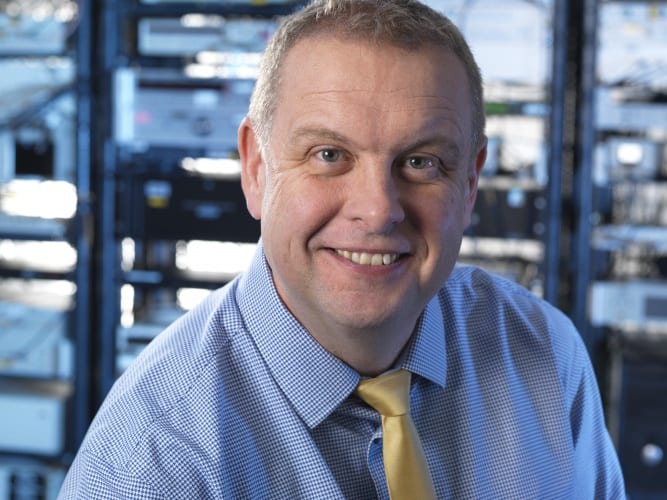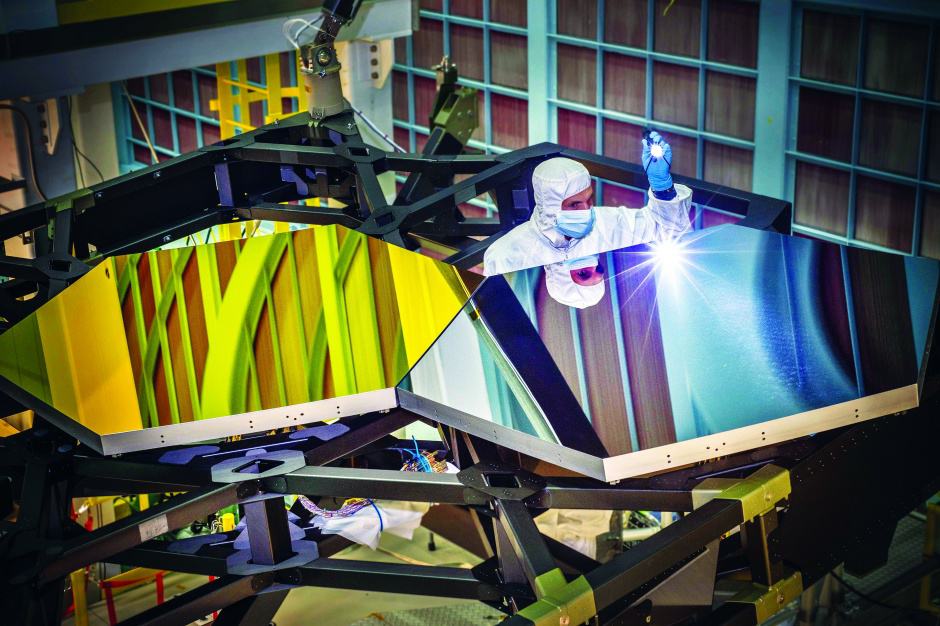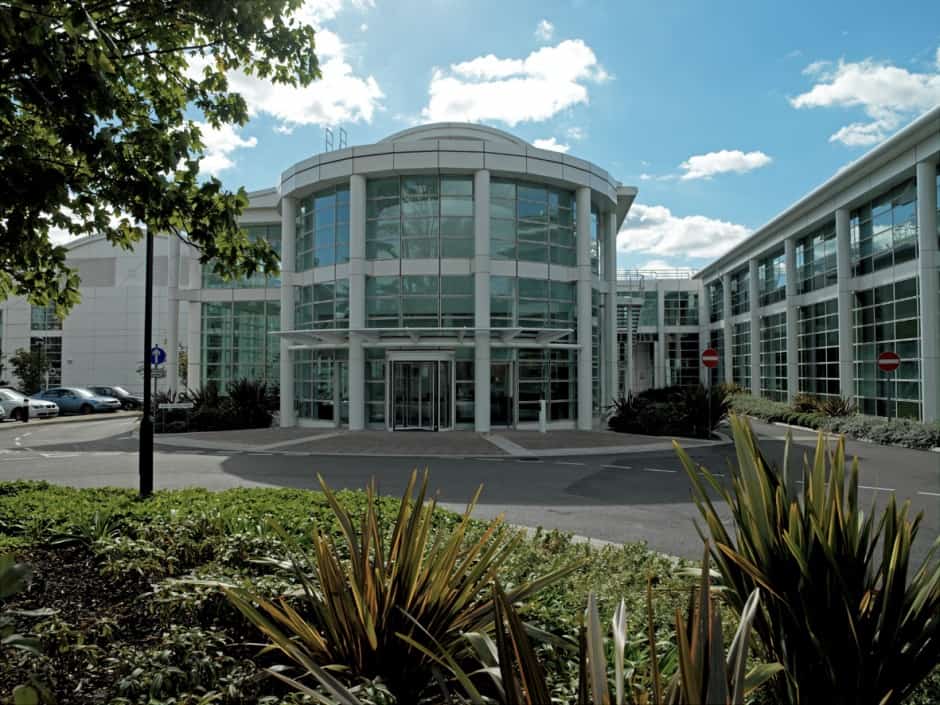Fittingly, my interview with National Physical Laboratory (NPL) CEO Peter Thompson took place in the Institute of Engineering and Technology’s (IET) Turing Theatre, just a few minutes before he was due to take the stage. Turing himself worked for the NPL after the war, and it was there that the great man devised his plans for the ACE computer in 1946.

Some 80 years later, the man now in charge of the organisation was there to launch NPL Instruments, a new commercial service that will build on existing capabilities in an effort to better serve industry. It’s a project Thompson is clearly passionate about, and something he’s been working towards since taking over the NPL in September 2015.
“We already have an instruments capability, and what we’re doing is wrapping our arms around that and saying we can do this far more effectively,” he said. “Often we might work on instruments and get it to a certain stage that develops the knowledge, and then move on to the next instrument, whereas we can actually take that further up the technology-readiness levels.”
NPL Instruments is essentially a new business stream where a dedicated team will look to explore new commercial opportunities for the work already being done by the lab’s 600-plus measurement scientists. Much of that work involves partnering with some of the biggest public and private scientific organisations in the world, including NASA, CERN and ESA, as well as UK bodies such as the MoD and DEFRA.

“We’re a national lab, we’re mission-driven, we’re owned by government, and our mission is to provide that underpinning measurement capability for UK prosperity and quality of life,” Thompson explained. “It doesn’t get more important at this point in time for the UK that we’re able to support industry, enable it to export, and to take on some of the big societal challenges.
“To do that, you need to understand what the big challenges are in the future that measurement can help with, be that energy and the environment, health and life sciences, advanced manufacturing or digital.”
Metrology – the science of measurement – lies at the very core of technological advancement, and the ability to accurately measure the world around us has underpinned our scientific progress. By improving accuracy we remove uncertainty, something that is increasingly important as engineering projects grow in complexity.
Days after speaking with Thompson, the 2018 launch date for the James Webb Space Telescope (JWST) was confirmed. With a primary mirror roughly seven times bigger than Hubble’s – which will unfold only once it has been launched on a rocket and is 1.5 million kilometres from Earth – the JWST is the epitome of complex engineering. NASA uses some of the most accurate machines in the world to craft the mirrors for its space telescopes, and NPL provides the laser systems that control and operate those machines. If you don’t get things right on the ground, Thompson explained, you have major problems in space.
By improving accuracy we remove uncertainty, something that is increasingly important as engineering projects grow in complexity.
“In ESA, for example, when it launches future missions, it needs to know that all of the separate component parts of a satellite do not impact on the performance of the satellite when it’s out in the far reaches of space,” he said.
“When one part of a satellite is woken, it may produce a miniscule vibration that actually means the satellite cannot perform its primary function. So you need to be able to test these individual components in an environment in which they have six degrees of freedom… so that you can measure whether they produce an actual vibration or a force themselves.

“We’ve developed what is essentially an anti-vibration table, which is borne out of a lot of the work we’ve done in dimensional and mass metrology in the past, so that ESA can test these components and give itself much greater confidence that they are going to operate in the manner that ESA wants them to once they’re in space on that mission.”
Thompson has a PhD in molecular electronics and spent many years of his career in the defence sector, including the Defence Science and Technology Laboratory (DSTL) and the MoD’s Counter Terrorism Science and Technology Centre. I asked him how his experience in defence and security would influence the direction of the NPL.
You need to make sure you’re developing solutions that will work in the hands of the end user.
“We already do some work in the defence sector,” he said. “DSTL supports NPL in the development of some quantum instrumentation, miniaturised atomic clocks. So there’s already a strong relationship between NPL and the defence and security sector.
“Perhaps what I’m bringing to NPL is a real focus on impact and working with the end user, understanding what the end user needs. You have a very clear focus on that if you’re working in defence and security, and operations are underway. You need to make sure you’re developing solutions that will work in the hands of the end user. And that means spending a lot of time with the end user, not just – as we used to describe – doing ‘drive-by’ research where you come up with a smart idea, throw it over the fence and drive off to go and do something more interesting that’s often of no use to the end user.”
That customer-led focus is a theme that underlies NPL Instruments. A key goal will be to help industry and academia bridge the notorious ‘valley of death’, the graveyard where much scientific research ends up after failing to deliver commercial value.
“It’s difficult to argue against the statistics,” said Thompson. “When you look at the amount of papers we produce, the academic excellence of the UK, and then compare those measures with how other countries innovate and pull through, clearly the statistics are not in our favour, despite being a very innovative, creative nation.”
I’d lose the faith of my own folks.... if I said as a CEO that I didn’t worry about the implications of Brexit
Thompson believes national organisations such NPL and Innovate UK need to play a more prominent role in overcoming the valley of death, simplifying engagement and communication between industry and academia. “We can provide that bridge between the two communities,” he said.
In the aftermath of the Brexit vote, both those communities now face increased uncertainty. Industry is wary of tariff and customs complications, while funding for research could come under threat in the Article 50 shake-up. International collaboration, which is at the heart of much of today’s leading scientific activity, could also be hampered by the introduction of immigration controls. Measurement is, by its very nature, reliant on transnational cooperation and agreement on accepted standards, and NPL is very much an international organisation.
“I’d lose the faith of my own folks, and anybody reading your magazine, if I said as a CEO that I didn’t worry about the implications of Brexit,” said Thompson. “I think it’s very early at the moment to make any confident predictions as to how this is going to play out. My primary focus since the end of June has been to do what I can to reassure the many nationalities that we have working within NPL.
“The measurement system is a global system, it is reliant on international comparisons between national measurement institutes. We’re very proud to have in excess of 40 different nationalities represented within NPL… who’ve been here for a week, or for 20 years. And as somebody said to me earlier, when you work within NPL you wouldn’t know that somebody was from one country and somebody else was from another one. We work as a team, we’re very proud of that, and we hope to maintain and, if anything, build on that. It’s at the very heart of what NPL is, and what NPL will be in the future.”
Career CV
Peter Thompson
Chief executive officer, NPL
- Following a PhD in molecular electronics, worked in trace analytical chemistry for the Defence Research Agency and Defence Evaluation and Research Agency.
- Held a variety of technical, project and programme roles before joining the Defence Science and Technology Laboratory (DSTL), where he undertook business unit leader and customer-facing roles in intelligence, surveillance and reconnaissance for defence and security.
- Became head of the Counter Terrorism Science and Technology Centre, before a return to DSTL as programme director for science and technology.
- Following a period in the Ministry of Defence headquarters, where he joined the Senior Civil Service leading science and technology policy, Thompson returned to DSTL as a board member and deputy chief executive, responsible for corporate strategy, governance, strategic relationships, communications and human resources.
- Took up his present role at the National Physical Laboratory in September 2015.

Red Bull makes hydrogen fuel cell play with AVL
Formula 1 is an anachronistic anomaly where its only cutting edge is in engine development. The rules prohibit any real innovation and there would be...